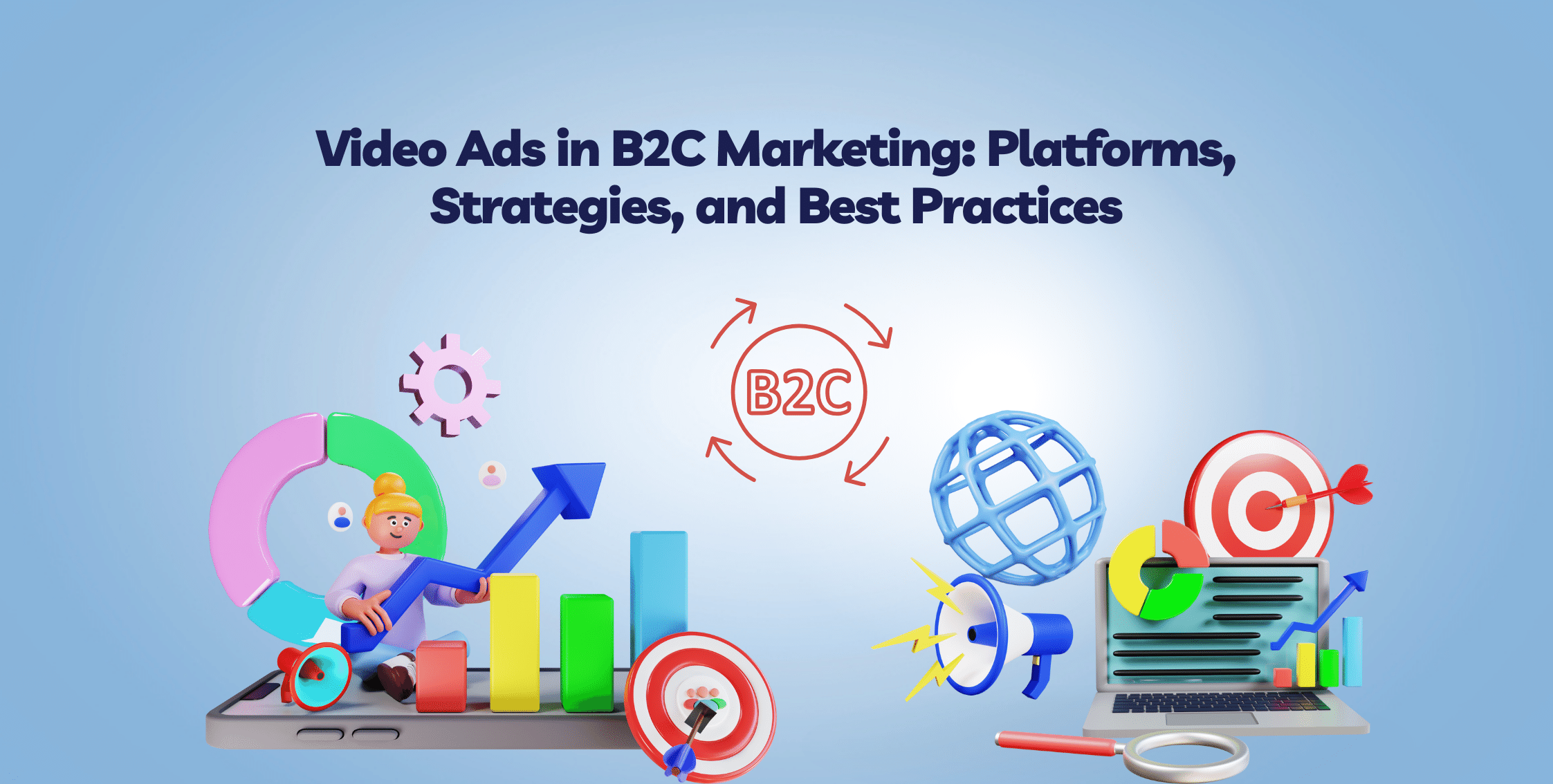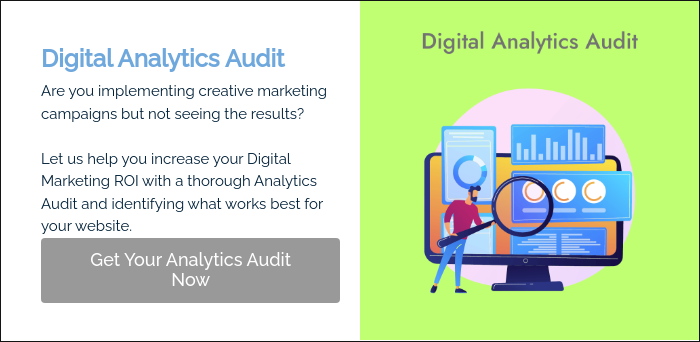Have you ever noticed that video ads seamlessly blend into our online experience, making their marks across various social media platforms?
Catchy videos have transformed B2C businesses to reach their everyday customer.
By Creating fun and attention-grabbing videos focusing on their brand, businesses can make people more aware of what they offer and increase sales.
The Video Advertising sector ranks fourth within the digital world. It will jump from a global revenue of US$176 billion in 2023 to US$241 billion by 2028.
Do you want to learn insights about video marketing?
Then this blog is a free treat for you!
In this blog, we'll dig deep into video marketing and advertising, discussing best practices and strategies for video advertising.
Get in touch to learn about Analytico’s Digital Analytics Audit services or GA4 audit services.
Power of Video Ads:
Video Ads are short promotional messages presented in video format, typically used for marketing and advertising purposes on digital platforms to engage and attract viewers through audiovisual storytelling.
Retail companies often use messages about coupons, sales, or online specials to encourage impulse purchases and boost sales. They can even target specific viewers by using data from social media, shopping sites, and past interactions with the brand to show personalized ads.
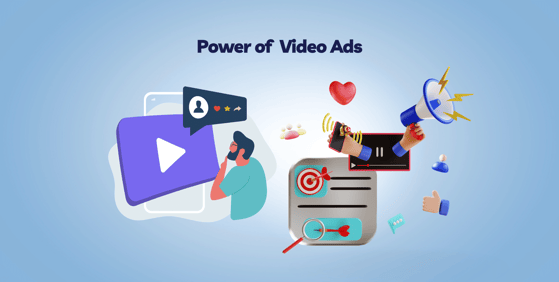
It helps businesses show viewers ads likely to catch their interest. Although B2C companies have embraced video advertising, B2B companies are far in this aspect.
According to the Content Marketing Institute, 66% of B2C marketers use video to advertise their products or services.
Types of B2C Video Marketing & Advertising:
In B2C marketing, using various video ads can significantly enhance engagement and conversion rates.
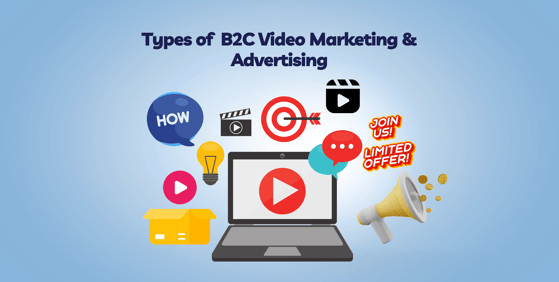
Here are some effective types of video ads commonly used in B2C marketing:
Explainer Videos:
These videos concisely explain your product or service's features, benefits, and value proposition to potential customers. These video ads are excellent for introducing new products or demonstrating how existing ones solve consumer pain points.
Product Demonstrations:
These videos showcase your product in action to highlight its functionality, ease of use, and unique selling points. Seeing the product in action helps consumers better understand its benefits and increases their confidence in purchase.
Customer Testimonials:
Try to feature satisfied customers sharing their positive experiences with your product or service. Authentic testimonials build trust and credibility, helping to reassure potential buyers and overcome objections.
Behind-the-Scenes Videos:
Take viewers behind the scenes of your business operations, manufacturing processes, or team culture. Humanizing your brand by showing the people and processes behind it can strengthen emotional connections with consumers.
Social Media Stories and Reels:
Short, vertical video ads for platforms like Instagram, Facebook, and Snapchat to capture attention quickly and encourage sharing and engagement.
Tutorial and How-To Videos:
Provide valuable educational videos on “how to use” your products effectively or offer tips and tricks related to your industry. Useful tutorials establish your brand as a helpful resource and can attract consumers seeking solutions to their problems.
Limited-Time Offers and Promotions:
Limited-time offers discounts, or promotions in video advertisements create urgency and drive sales. Highlighting exclusive deals or seasonal promotions can encourage viewers to take immediate action.
Emotional Storytelling:
Compelling stories evoke emotion and resonate with your target audience's values, aspirations, or challenges. Emotional storytelling can create a connection with consumers, driving brand affinity and loyalty.
Social Media Video Marketing & Advertising Platforms:
Each platform for video advertising offers unique features and capabilities, allowing B2C brands to tailor their video ad strategies to reach specific audiences and achieve different marketing objectives.
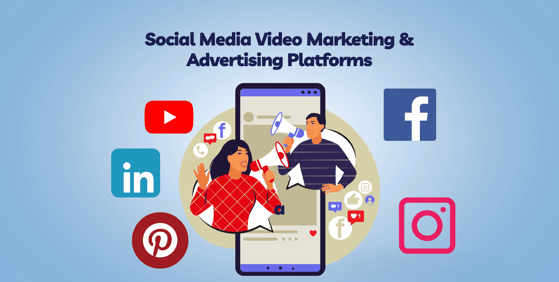
Here's how B2C brands can effectively utilize video ads across various platforms, including YouTube, Facebook, and Instagram:
YouTube:
Audience Reach: YouTube boasts over 2 billion logged-in monthly users, making it an ideal platform for reaching a broad audience.
Targeting Options: B2C brands can use YouTube's sophisticated targeting options, including demographic targeting, interests, keywords, and remarketing, to reach their ideal customers.
Video Formats: Brands can choose from various video ad formats on YouTube, including:
- In-stream ads are skippable ads that play before, during, or after other videos.
- Discovery ads appear alongside other YouTube videos or search results.
- Bumper ads are short, non-skippable ads.
Engagement Metrics: YouTube provides robust analytics, allowing brands to track metrics such as views, watch time, engagement, and conversions. This data enables brands to measure the effectiveness of their video ads and optimize their campaigns accordingly.
Facebook:
Audience Targeting: With over 2.8 billion monthly active users, Facebook offers extensive targeting and retargeting options based on demographics, interests, behaviors, and custom audience segments.
Video Ad Formats: B2C brands can choose from various video ad formats on Facebook, including
- In-feed.
- Carousel.
- Slideshow.
- Stories ads.
Each format offers unique opportunities for storytelling and engagement.
Native Integration: Video ads seamlessly integrate into users' Facebook feeds, increasing the likelihood of engagement and interactions. Brands can leverage autoplay features and eye-catching visuals to capture users' attention as they scroll through their feeds.
Call-to-Action Buttons: Facebook allows brands to include call-to-action (CTA) buttons in their video ads, such as "Shop Now," "Learn More," or "Sign Up." These buttons encourage users to take action directly from the ad, driving traffic and conversions.
Instagram:
Visual Appeal: Instagram is a highly visual platform, ideal for showcasing visually appealing video content. Audience Engagement: With over 1 billion monthly active users, Instagram offers high engagement rates, particularly among younger demographics.
Video Ad Formats: B2C brands can leverage various video ad formats on Instagram, including:
- In-feed video ads.
- Stories ads.
- IGTV ads.
- Reels ads.
Each format offers different opportunities for creativity and storytelling.
Instagram Shopping: B2C brands can tag products in their video ads through Instagram Shopping, allowing users to shop directly from the ad without leaving the app.
Hashtag Strategy: Utilizing relevant hashtags in video ad captions can increase discoverability and reach on Instagram. Brands can research popular hashtags in their niche and incorporate them strategically into their video ad campaigns.
|
Remember! B2C brands can effectively utilize video ads across platforms like YouTube, Facebook, and Instagram by understanding each platform's unique audience, targeting options, ad formats, engagement features, and analytics tools. |
Strategies & Best Practices for Video Marketing:
Here are some strategies and best practices for running video ads on popular platforms like YouTube, Facebook, and Instagram:
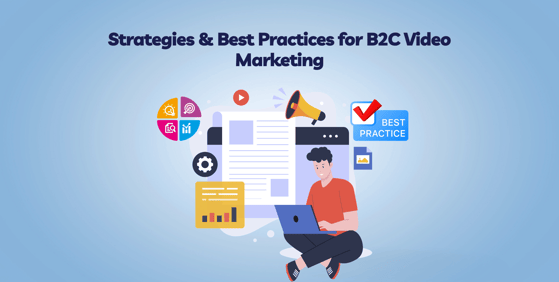
YouTube:
Hook Viewers Early: Since YouTube allows users to skip ads after a few seconds, it's crucial to hook viewers within the first few seconds of your video. Start with a compelling hook or an intriguing question to capture attention and encourage viewers to keep watching.
Example: A cosmetics brand might start their video ad with a close-up shot of a model applying their new lipstick, accompanied by a bold statement like "Get ready to unleash your inner beauty."
Focus on Storytelling: Tell a compelling story that resonates with your target audience. Use storytelling techniques to evoke emotional connection with viewers, ultimately driving brand affinity and engagement.
Example: A sports apparel brand might create a video ad showcasing the journey of an amateur athlete training hard to achieve their goals, highlighting the brand's products.
Optimize for Mobile: With a significant portion of YouTube views coming from mobile devices, ensure your video ads for mobile viewing. Use clear visuals, legible text, and concise messaging to cater to mobile users.
Utilize CTAs: Incorporate clear and compelling calls-to-action (CTAs) in your video ads to prompt viewers to take the desired action, whether it's visiting your website, making a purchase, or subscribing to your channel.
Facebook:
Design for Sound-Off Viewing: Since many users watch videos on Facebook with the sound off, create video ads that are visually engaging even without sound. Use captions, text overlays, and compelling visuals to convey your message effectively.
Example: A food delivery service might create a video ad showcasing mouth-watering dishes with text overlays highlighting discounts and promotions.
Test Different Formats: Experiment with different video ad formats on Facebook, such as in-feed videos, carousel ads, or Stories ads, to see which resonates best with your audience—test variations in length, messaging, and creative elements to optimize performance.
Segment Your Audience: Facebook's advanced targeting options to segment your audience based on demographics, interests, and behaviors. Tailor your video ads to different audience segments to increase relevance and engagement.
Optimize for Autoplay: Since Facebook video ads autoplay as users scroll through their feed, design your ads to grab attention from the beginning. Use striking visuals and compelling imagery to stand out amidst the clutter.
Instagram:
Create Thumb-Stopping Content: Instagram is a highly visual platform, so create video ads that are visually captivating and attention-grabbing. Use bold colors, dynamic visuals, and creative transitions to make your ads thumb-stopping.
Example: A fashion brand might create a video ad showcasing its latest collection with models posing in scenic places, set to upbeat music.
Utilize Instagram Stories: Instagram Stories ads reach users in a more immersive and engaging format. Use features like interactive polls, swipe-up links, and stickers to engage viewers and drive action.
Keep it Short and Sweet: Given the short attention span of Instagram users, keep your video ads concise and to the point. Aim for 15-30 seconds to deliver your message effectively without losing viewers' interest.
Encourage User Participation: Encourage user-generated content (UGC) and participation by incorporating user-generated videos or testimonials into your Instagram video ads. It can foster authenticity and trust among your audience.
|
Note! B2C brands can optimize video ad campaigns across different platforms to drive engagement, conversions, and brand awareness. It's essential to continuously monitor performance metrics and iterate on your strategies to achieve the best results. |
Conclusion:
In short, video ads are crucial in B2C marketing, leveraging technology and visual appeal to capture attention and drive sales.
Platforms like YouTube, Facebook, and Instagram offer diverse opportunities for engagement.
Ultimately, the future of B2C marketing lies in harnessing the storytelling power of video to deepen connections and achieve business goals amid rising video ad spending and shifting consumer preferences.
Do you like what you read? Learn more about Digital Analytics on our blog here.

